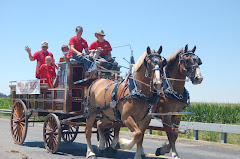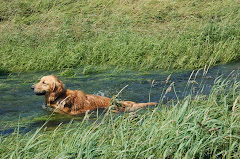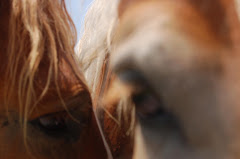
Thursday, December 17, 2009
Best Wishes for the Future!

Tuesday, November 17, 2009
Keep Your Pet Healthy During the Winter Months


 With leftover Halloween candy and Thanksgiving and Christmas around the corner, many of us have more chocolate around the house than at other times. The first problem with chocolate is the fat. Remember, in the case of pancreatitis, it is the fat that causes the problem. This can lead to severe vomiting, diarrhea, dehydration and abdominal pain. In the case of chocolate toxicity, theobromine is the toxic ingredient. Theobromine can cause vomiting, diarrhea, hyperactivity, tremors, seizures and cardiac arrythmias which can be fatal. Clinical signs usually occur within 6 to 12 hours of ingestion. The more chocolate liquor there is in a prodcut, the more theobromine is present. This makes baking chocolate the worst for your pet, followed by semisweet and dark chocolate, followed by milk chocolate, followed by chocolate flavored cakes and cookies. The effects of chocolate are proportional to the amount of chocolate ingested versus your pet's body weight. Remember, it takes nearly 4 days for the chocolate to work its way out of a dog's system. If the chocolate was just eaten, call your veterinarian immediately. If is possible to induce vomiting to rid the stomach of the toxic effects of chocolate.
With leftover Halloween candy and Thanksgiving and Christmas around the corner, many of us have more chocolate around the house than at other times. The first problem with chocolate is the fat. Remember, in the case of pancreatitis, it is the fat that causes the problem. This can lead to severe vomiting, diarrhea, dehydration and abdominal pain. In the case of chocolate toxicity, theobromine is the toxic ingredient. Theobromine can cause vomiting, diarrhea, hyperactivity, tremors, seizures and cardiac arrythmias which can be fatal. Clinical signs usually occur within 6 to 12 hours of ingestion. The more chocolate liquor there is in a prodcut, the more theobromine is present. This makes baking chocolate the worst for your pet, followed by semisweet and dark chocolate, followed by milk chocolate, followed by chocolate flavored cakes and cookies. The effects of chocolate are proportional to the amount of chocolate ingested versus your pet's body weight. Remember, it takes nearly 4 days for the chocolate to work its way out of a dog's system. If the chocolate was just eaten, call your veterinarian immediately. If is possible to induce vomiting to rid the stomach of the toxic effects of chocolate. The Christmas tree is full of dangers for both dogs and cats. Tinsel, along with yarn, ribbon or string is certainly an appealing play toy for any pet. When ingested, it can twist and tie up the intestines. Ornaments, too, are extremely dangerous in the mouths and stomachs of pets. The water at the base of the Christmas tree can contain secretions of fertilizer and nasty bacteria that can cause serious health problems for our pets.
The Christmas tree is full of dangers for both dogs and cats. Tinsel, along with yarn, ribbon or string is certainly an appealing play toy for any pet. When ingested, it can twist and tie up the intestines. Ornaments, too, are extremely dangerous in the mouths and stomachs of pets. The water at the base of the Christmas tree can contain secretions of fertilizer and nasty bacteria that can cause serious health problems for our pets.  Light strings and electrical cords are dangerous when chewed. So, use common sense when you are decorating and make sure your pet is supervised when around these items.
Light strings and electrical cords are dangerous when chewed. So, use common sense when you are decorating and make sure your pet is supervised when around these items.Monday, November 2, 2009
Umbilical Hernias in Puppies
An umbilical hernia can vary in size to very small (2-3mm) or very large where a large defect or hole can be felt in the body wall. For the most part, the outpouching of skin contains fat from the abdomen. However, if the hernia is large, the outpouching can contain intestines.


Saturday, October 17, 2009
Sweeney in Horses


The nerve damage is commonly caused by horses colliding with other horses or objects.....ie stall doors, trees...etc. Nerve damage is also caused by ill fitting work collars putting pressure on the nerve. This is seen in horses which are used to pull wagons, carts and freight.
Pain may or may not be present in the affected limb. As the muscles atrophy worsens, the horse may have difficulty extending the forelimb. Also, horses may swing their shoulder out due to instability or loosening of the shoulder joint from lack of muscle and ligament tone.
Treatment of sweeney involves anti-inflammatories and physical therapy. Nerves can heal and possibly even regenerate if the injury is not too extensive and enough time is allowed. Muscle massage and electrical stimulation has been used. For cases with extensive scarring, surgery can be performed to release the nerve and hopefully regain function. In the case of a poorly fitted collar, rest and a properly adjusted collar is indicated.
Saturday, October 3, 2009
The Wonderful World of Draft Horses Part II

 The Percheron horse originated from France in the province of Le Perche, located about 50 miles southwest of Paris. Traditionally, the Percheron breed was a breed of greys. Used as a war horse, the French Knight is almost always seen on a grey or white horse. When the day of the war horse was over, Percherons were used to pull heavy stage coaches in France. These horses could trot 7-10 miles per hour with the endurance to perform day in and day out. The light colored greys and whites were easily seen at night and thus preferred. When the railroad replaced the stage coaches and horses began to replace oxen in agriculture, the need for a heavier draft horse grew. The breeders of Le Perche complied. From war horse to light draft coach to heavy draft, the Percheron breed was developed.
The Percheron horse originated from France in the province of Le Perche, located about 50 miles southwest of Paris. Traditionally, the Percheron breed was a breed of greys. Used as a war horse, the French Knight is almost always seen on a grey or white horse. When the day of the war horse was over, Percherons were used to pull heavy stage coaches in France. These horses could trot 7-10 miles per hour with the endurance to perform day in and day out. The light colored greys and whites were easily seen at night and thus preferred. When the railroad replaced the stage coaches and horses began to replace oxen in agriculture, the need for a heavier draft horse grew. The breeders of Le Perche complied. From war horse to light draft coach to heavy draft, the Percheron breed was developed. 
This picture belows show two teams in exhibition. Note the one team is a team of black Percherons and the other team is a team of greys.

 Just as other European draft horses, the Percheron breed was heavily imported into the US in the 1870s and 80s. The current Percheron Horse Association of America was formed in 1905. The number of registrations grew until the 1940s and WWII. The low point in Percheron registrations came in 1954 when just 85 head were recorded. Just like the Belgian breed, a handful of breeders persisted and Americans rediscoverd the usefulness of the draft horse. Since then, the Percheron breed has seen a resurgence in its numbers and value.
Just as other European draft horses, the Percheron breed was heavily imported into the US in the 1870s and 80s. The current Percheron Horse Association of America was formed in 1905. The number of registrations grew until the 1940s and WWII. The low point in Percheron registrations came in 1954 when just 85 head were recorded. Just like the Belgian breed, a handful of breeders persisted and Americans rediscoverd the usefulness of the draft horse. Since then, the Percheron breed has seen a resurgence in its numbers and value.
 The Clydesdale breed originated from Scotland in the district of Lanarkshire. As with the other European draft breeds, these horses were originally developed for use in warfare to carry knights into battle. A heavier breed was needed to carry armor-clad warriors to war. When the need for war horses declined, the Clydesdale horse was bred not only for agriculture but for heavy haulage in the coalfields of Lanarkshire. The Clydesdale breed flourished in the late 19th century leading to large numbers of exports into Australia, New Zealand, Canada and the United States. Today, the Clydesdale is virtually the only draft breed in its native Scotland.
The Clydesdale breed originated from Scotland in the district of Lanarkshire. As with the other European draft breeds, these horses were originally developed for use in warfare to carry knights into battle. A heavier breed was needed to carry armor-clad warriors to war. When the need for war horses declined, the Clydesdale horse was bred not only for agriculture but for heavy haulage in the coalfields of Lanarkshire. The Clydesdale breed flourished in the late 19th century leading to large numbers of exports into Australia, New Zealand, Canada and the United States. Today, the Clydesdale is virtually the only draft breed in its native Scotland.  The picture above is "Samurai" owned by Dr. Linda-first place gelding and 1st place American Bred Gelding at the National Clydesdale show.
The picture above is "Samurai" owned by Dr. Linda-first place gelding and 1st place American Bred Gelding at the National Clydesdale show.  A clydesdale halter class.
A clydesdale halter class. 


Sunday, August 30, 2009
The Wonderful World of Draft Horses


 Dr. Linda breeds and shows Clydesdales and Dr. Scott and his brother, Gary (my husband) have bred and shown Clydesdales, Percherons and Belgians.
Dr. Linda breeds and shows Clydesdales and Dr. Scott and his brother, Gary (my husband) have bred and shown Clydesdales, Percherons and Belgians.  The Arthur Veterinary Clinic has a large client base of draft horse owners.
The Arthur Veterinary Clinic has a large client base of draft horse owners.


Halter classes are shown by age....for example, all the yearling mares will compete against each other. Typically, the show will crown a junior champion stallion and mare (2 years and under) and a senior champion stallion and mare (3 years and over). From these winners a Grand Champion mare and a Grand Champion stallion will be awarded. Most shows then go on to choose a Best of Breed.

Hitch classes involved horses in harness pulling either a show cart or a wagon. A show cart is usually pulled by one horse, whereas the classes pulling a wagon are teams, unicorns (three horses), four and six. Occasionally, an event will host an eight horse hitch class. Over the years, geldings have been commonly used in the hitch classes. However, the last 10-15 years has seen an increase in the number of all mare hitches which has resulted in separate classes for gelding hitches and mare hitches. If you have never been to a draft horse show, I encourage you to attend a hitch show. Watching these hitches thunder around a ring, decked out in show harness and a show wagon will give you goose bumps.....I guarantee it!!!




A "sea" of hitch horses. 
The six horse hitch class at the NABC VI
Indiana State Fairgrounds
Men's Cart Class at the NABC VI
Four Abreast Class at the NABC VI. This is a very exciting class!
Here is a video of a an eight horse hitch class
Next blog, I will discuss Percherons and Clydesdales.....plus have more great pictures! Thanks to Kelly Woodbury for letting me use some of her pictures from the shows!.




























